Sergio Nesmachnow
Adversarial attacks to image classification systems using evolutionary algorithms
Jul 17, 2025

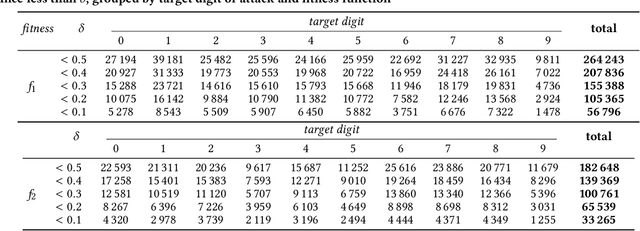
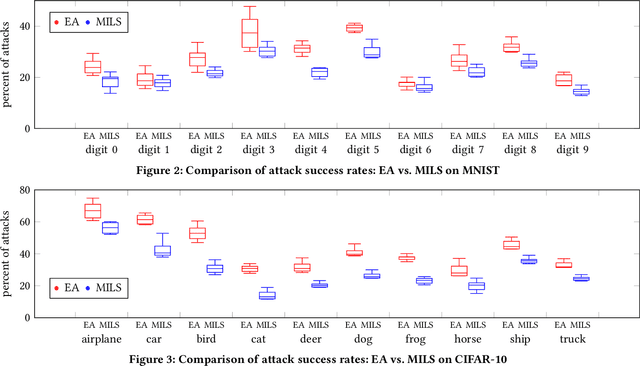
Abstract:Image classification currently faces significant security challenges due to adversarial attacks, which consist of intentional alterations designed to deceive classification models based on artificial intelligence. This article explores an approach to generate adversarial attacks against image classifiers using a combination of evolutionary algorithms and generative adversarial networks. The proposed approach explores the latent space of a generative adversarial network with an evolutionary algorithm to find vectors representing adversarial attacks. The approach was evaluated in two case studies corresponding to the classification of handwritten digits and object images. The results showed success rates of up to 35% for handwritten digits, and up to 75% for object images, improving over other search methods and reported results in related works. The applied method proved to be effective in handling data diversity on the target datasets, even in problem instances that presented additional challenges due to the complexity and richness of information.
Fast energy-aware OLSR routing in VANETs by means of a parallel evolutionary algorithm
Jan 17, 2025Abstract:This work tackles the problem of reducing the power consumption of the OLSR routing protocol in vehicular networks. Nowadays, energy-aware and green communication protocols are important research topics, specially when deploying wireless mobile networks. This article introduces a fast automatic methodology to search for energy-efficient OLSR configurations by using a parallel evolutionary algorithm. The experimental analysis demonstrates that significant improvements over the standard configuration can be attained in terms of power consumption, with no noteworthy loss in the QoS.
Enhancing Mass Customization Manufacturing: Multiobjective Metaheuristic Algorithms for flow shop Production in Smart Industry
Jul 26, 2024Abstract:The current landscape of massive production industries is undergoing significant transformations driven by emerging customer trends and new smart manufacturing technologies. One such change is the imperative to implement mass customization, wherein products are tailored to individual customer specifications while still ensuring cost efficiency through large-scale production processes. These shifts can profoundly impact various facets of the industry. This study focuses on the necessary adaptations in shop-floor production planning. Specifically, it proposes the use of efficient evolutionary algorithms to tackle the flowshop with missing operations, considering different optimization objectives: makespan, weighted total tardiness, and total completion time. An extensive computational experimentation is conducted across a range of realistic instances, encompassing varying numbers of jobs, operations, and probabilities of missing operations. The findings demonstrate the competitiveness of the proposed approach and enable the identification of the most suitable evolutionary algorithms for addressing this problem. Additionally, the impact of the probability of missing operations on optimization objectives is discussed.
Evolutionary latent space search for driving human portrait generation
Apr 25, 2022



Abstract:This article presents an evolutionary approach for synthetic human portraits generation based on the latent space exploration of a generative adversarial network. The idea is to produce different human face images very similar to a given target portrait. The approach applies StyleGAN2 for portrait generation and FaceNet for face similarity evaluation. The evolutionary search is based on exploring the real-coded latent space of StyleGAN2. The main results over both synthetic and real images indicate that the proposed approach generates accurate and diverse solutions, which represent realistic human portraits. The proposed research can contribute to improving the security of face recognition systems.
Exact and heuristic approaches for multi-objective garbage accumulation points location in real scenarios
Mar 11, 2021
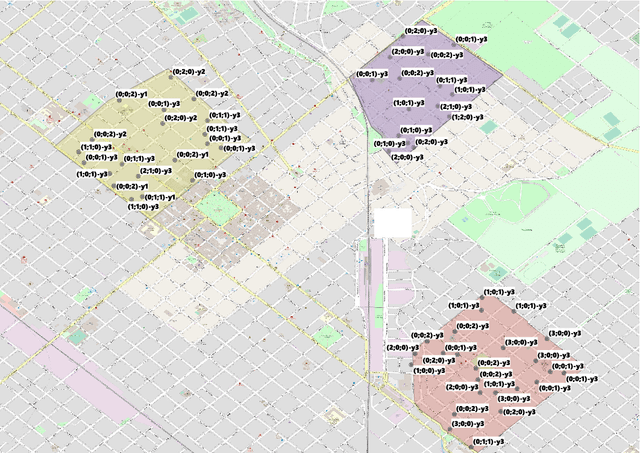
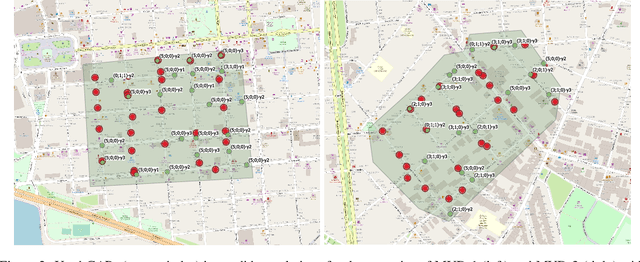

Abstract:Municipal solid waste management is a major challenge for nowadays urban societies, because it accounts for a large proportion of public budget and, when mishandled, it can lead to environmental and social problems. This work focuses on the problem of locating waste bins in an urban area, which is considered to have a strong influence in the overall efficiency of the reverse logistic chain. This article contributes with an exact multiobjective approach to solve the waste bin location in which the optimization criteria that are considered are: the accessibility to the system (as quality of service measure), the investment cost, and the required frequency of waste removal from the bins (as a proxy of the posterior routing costs). In this approach, different methods to obtain the objectives ideal and nadir values over the Pareto front are proposed and compared. Then, a family of heuristic methods based on the PageRank algorithm is proposed which aims to optimize the accessibility to the system, the amount of collected waste and the installation cost. The experimental evaluation was performed on real-world scenarios of the cities of Montevideo, Uruguay, and Bah\'ia Blanca, Argentina. The obtained results show the competitiveness of the proposed approaches for constructing a set of candidate solutions that considers the different trade-offs between the optimization criteria.
* This article has been accepted for publication in the Waste Management journal
Parallel/distributed implementation of cellular training for generative adversarial neural networks
Apr 10, 2020

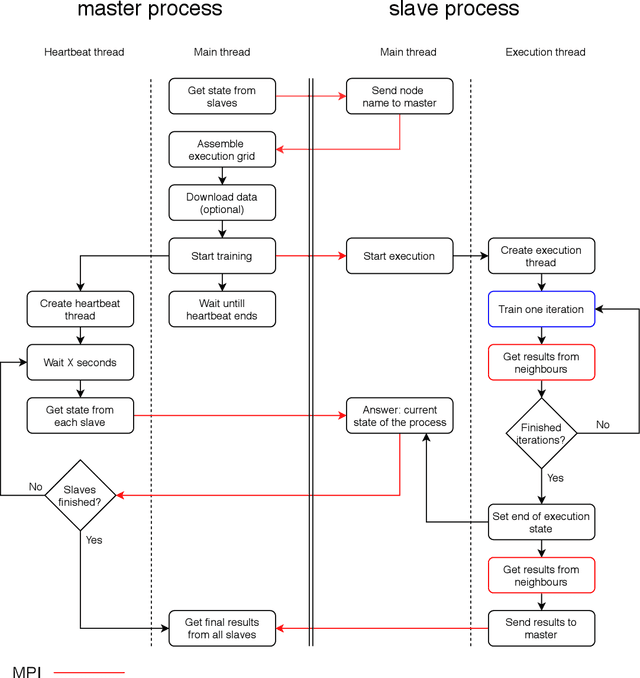

Abstract:Generative adversarial networks (GANs) are widely used to learn generative models. GANs consist of two networks, a generator and a discriminator, that apply adversarial learning to optimize their parameters. This article presents a parallel/distributed implementation of a cellular competitive coevolutionary method to train two populations of GANs. A distributed memory parallel implementation is proposed for execution in high performance/supercomputing centers. Efficient results are reported on addressing the generation of handwritten digits (MNIST dataset samples). Moreover, the proposed implementation is able to reduce the training times and scale properly when considering different grid sizes for training.
Soft computing methods for multiobjective location of garbage accumulation points in smart cities
Jun 25, 2019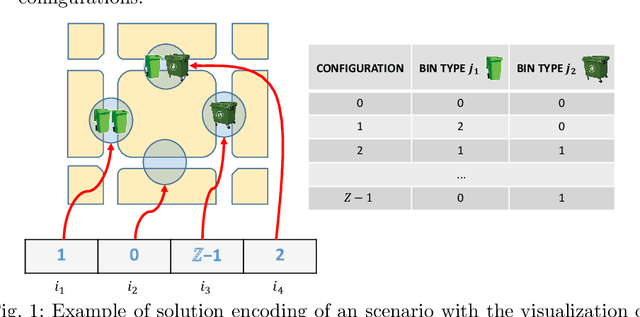
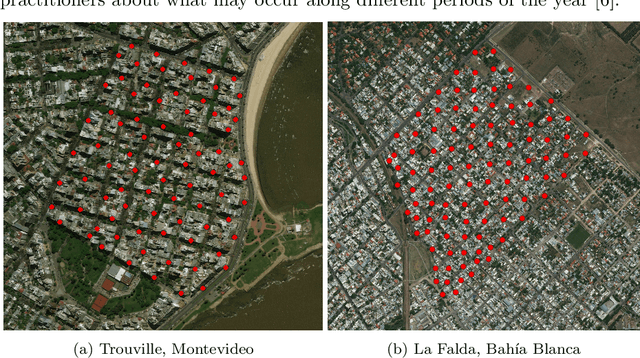
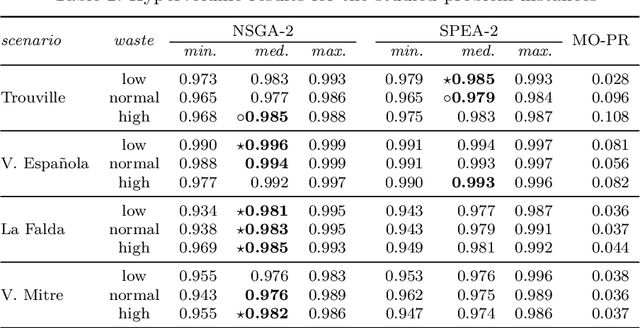
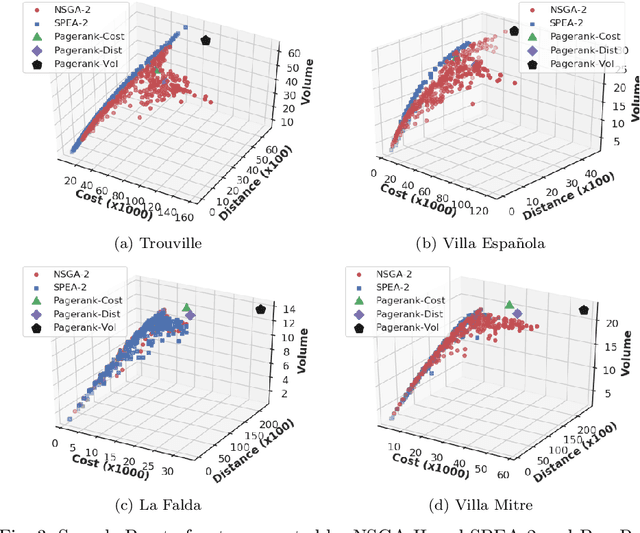
Abstract:This article describes the application of soft computing methods for solving the problem of locating garbage accumulation points in urban scenarios. This is a relevant problem in modern smart cities, in order to reduce negative environmental and social impacts in the waste management process, and also to optimize the available budget from the city administration to install waste bins. A specific problem model is presented, which accounts for reducing the investment costs, enhance the number of citizens served by the installed bins, and the accessibility to the system. A family of single- and multi-objective heuristics based on the PageRank method and two mutiobjective evolutionary algorithms are proposed. Experimental evaluation performed on real scenarios on the cities of Montevideo (Uruguay) and Bahia Blanca (Argentina) demonstrates the effectiveness of the proposed approaches. The methods allow computing plannings with different trade-off between the problem objectives. The computed results improve over the current planning in Montevideo and provide a reasonable budget cost and quality of service for Bahia Blanca.
 Add to Chrome
Add to Chrome Add to Firefox
Add to Firefox Add to Edge
Add to Edge